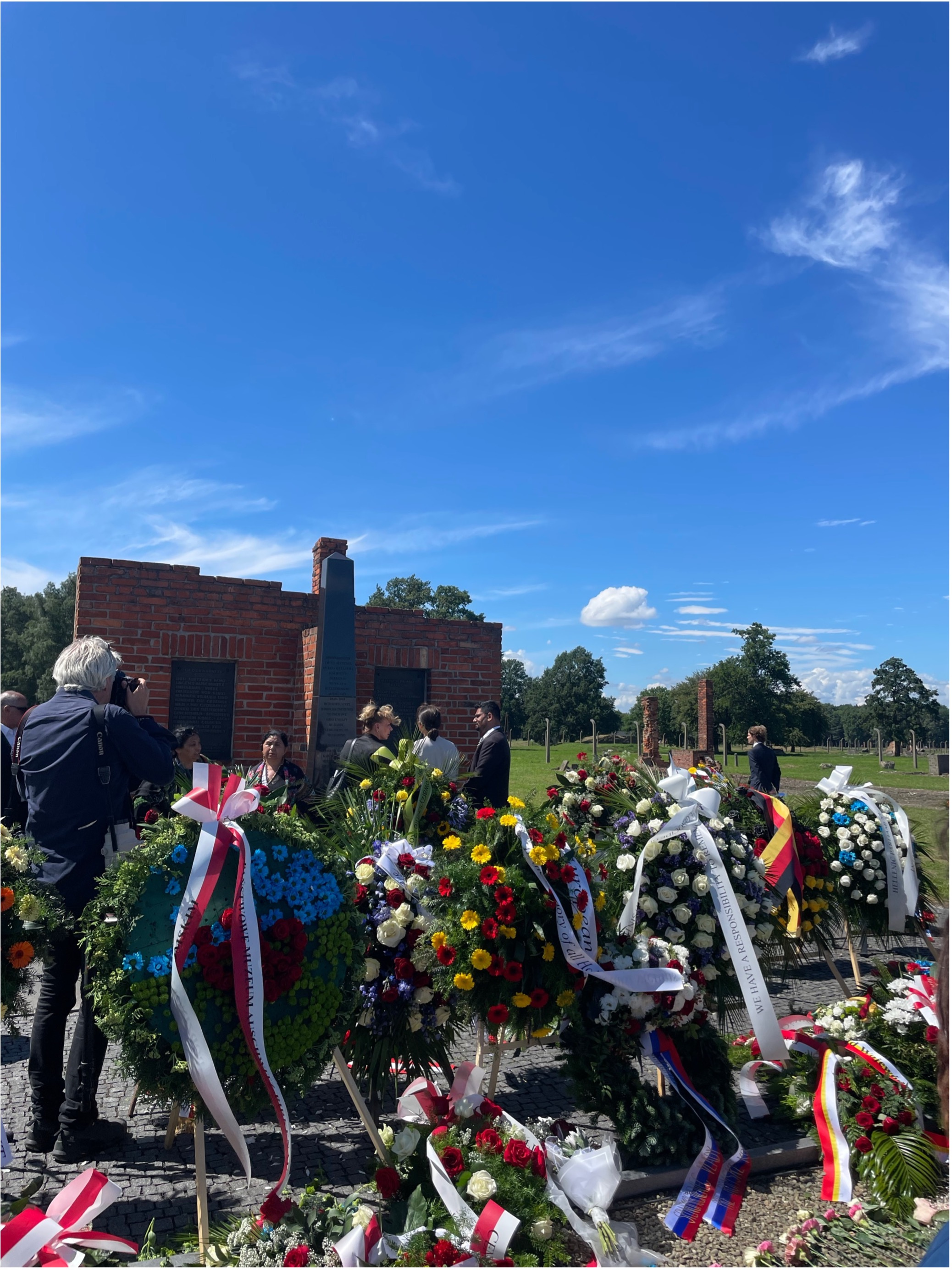Dikh he na bister!

Two weeks into my research, I was ultimately able to start conducting my survey on the influence of Holocaust fiction on public memory. Although I had received the ethics approval from Trinity in May, it took me another 10 days of working with and talking to a variety of people at the Museum and Memorial Auschwitz-Birkenau to finalise the survey. Acquiescence bias needed to be eliminated as much as possible, potentially leading questions rephrased, and another ethics approval from the Museum needed to be availed of before I was allowed to ask visitors to participate.
I have now been conducting the survey for nearly three weeks, asking visitors of the museum to take part and also spreading it online, so that the number of participants is rising steadily. As it is quite a detailed questionnaire, I noticed that it sometimes proves to be slightly difficult to get people to finish the full questionnaire, however, now that I am approaching the final stage, I can say that I am still very content with my results. The survey is set to run for another few days so that I have enough time to analyse my results and draw my conclusions before returning home where I will finalise my research poster.
I am enjoying every day of my research experience here at the museum and time is flying. I have had many discussions with others working or volunteering at the museum and to hear their perspective and discuss their perception and understanding of public memory was very insightful and enjoyable.
The Action Learning Set group meetings have been very helpful and it was great to hear of everyone’s experiences. To be quite frank, it was also calming to hear that everyone was experiencing some need for spontaneity as everyone had to adjust their original plans.
The environment here at the museum is something that occupies my mind frequently. Having been to the museum many a time before, I have to admit that it always feels like a parallel universe. Suddenly, you find yourself in a place where everyone is concerned about the same or at least similar issues as you, especially when considering that the Holocaust is a topic whose importance is often disregarded in today’s society. This importance that the Holocaust carries in this environment and the fact that it is not seen as an isolated event but as something that shapes reality until this day, makes me realise once more how important the work here at the museum is, as this understanding of the Holocaust and of its connection to today's society often lacks in everyday life.
The importance of the remembrance and understanding of the Holocaust becomes especially evident in moments like the commemoration of the Holocaust Memorial Day for Roma and Sinti which takes place annually on the 2nd of August.

On this day in 1944, the last Sinti and Roma prisoners of Auschwitz were murdered when the so-called “Zigeunerlager” ("Gypsy Camp") was liquidated. Over 4000 members of the Sinti and Roma lost their lives during this night and the day was therefore chosen to remember the 500.000 victims of the Porajmos ("The Devouring"), the genocide of the Roma people by the Nazis. The title of this blog references the name of the Roma Genocide Remembrance Initiative and can be translated as "Look and don't forget", which to me, is a four-word summary of what is most important when it comes to the Holocaust and the remembrance of its victims.
At the commemoration ceremony, I got to listen to the testimonial of survivor Gerda Pohl and a diverse range of speeches, among them an appeal by Romani Rose, the president of the Central Council for German Sinti and Roma who directly addressed the attending German politicians and demanded them to stand up and work against racism and antiziganism within the German police force. I was also able to talk to some of the other attendees about my work, such as Nicola Beer, vice-president of the European Parliament.

My current results are in line with my thesis that Holocaust fiction is used by the public to inform themselves about the topic, with consequences that include the manifestation of stereotypes within public memory and the forgetting of the actual victim groups of the Holocaust, as well as a shift of the perspective, away from the relevant aspects that shaped the reality of this period. Sometimes, when working away in the museum by myself over the past five weeks, I worried that my project has no applicability to the "real world", outside of the museum, however, especially through the commemoration ceremony and Mr. Rose's appeal to work against misinformation, discrimination and stereotyping, the importance and applicability of my project to "real life" was affirmed once more, and reduced if not even banished this worry from my head completely.
If you want to learn more about the European Holocaust Memorial Day of the Sinti and Roma and its commemoration you can check out the link below.
I am very grateful for this experience and thank everyone who made this possible and was part of my Laidlaw journey so far.
Thank you to Lord Laidlaw and the Laidlaw Foundation,
to Joel and the Laidlaw team at Trinity for their constant support,
to Dr Wanda Witek-Malicka from the museum for supporting my five weeks in Poland,
and to Prof Zuleika Rodgers for supervising this project.




Please sign in
If you are a registered user on Laidlaw Scholars Network, please sign in